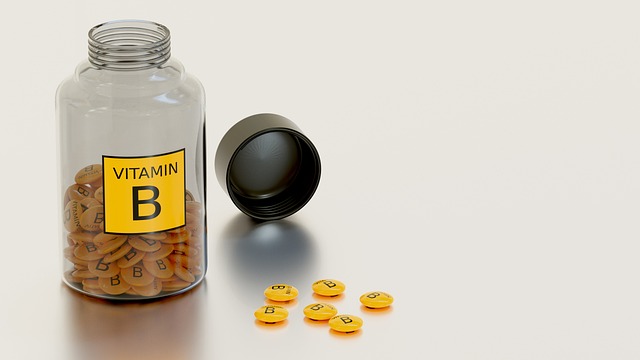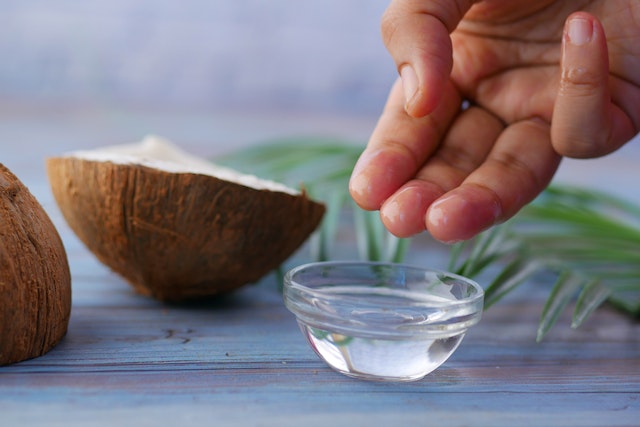Exfoliative dermatitis, often known as erythroderma, is a severe skin surface inflammation. Scaling, peeling, and flaking of the skin are symptoms of this skin disorder, which may also cause itching and hair loss.
Symptoms of Skin Peeling on Face
- Redness
- Itchy Skin
- Flaky or Scaly Skin
- Dryness
Redness: Redness is a common symptom of skin peeling on the face. It is usually caused by inflammation in the skin, which can be caused by a variety of factors. These can include allergies, sunburn, dryness, or irritation from harsh skincare products.
The redness can be accompanied by other symptoms such as heat, swelling, or a burning sensation. If the redness persists or is accompanied by pain, it is important to seek medical attention.
Itchy Skin: Itchy skin is often caused by an underlying condition such as eczema or psoriasis. The itching can be accompanied by other symptoms such as redness, dryness, and flakiness. In severe cases, the itching can be intense and may require medical attention.
Flaky or Scaly Skin: Flaky or scaly skin is usually caused by dryness or irritation from harsh skincare products. The flakiness or scaling can be accompanied by other symptoms such as redness, itching, and tenderness. If the flakiness or scaling persists, it is important to seek medical attention.
Dryness: Dryness on the skin occurs due to dehydration, environmental irritants, or inadequate skin care. The dryness can be accompanied by other symptoms such as redness, itching, flakiness, and tenderness.
In severe cases, the dryness can lead to cracking and bleeding of the skin. If the dryness persists or is accompanied by other symptoms, it is important to seek medical attention.
Why Is My Skin Peeling - Possible Causes of Skin Peeling
Peeling skin indicates that your skin is healing from some type of damage. The leading causes of skin peeling include:
1. Sunburns
Sunburn is a harmful reaction that occurs when your body's natural defenses designed to protect you from UV radiation are overburdened. A direct damage, such a sunburn or infection, might result in skin peeling.
2. Skin Irritation
Peeling can also be a sign of skin conditions like eczema, psoriasis, and seborrheic dermatitis, all of which can be treated.
3. Vitamin Deficiency
4. Chemical Burns
A chemical burn occurs when an irritant, such as an acid or a base, comes into contact with your eyes or skin. Chemical burns are also known as caustic burns. Some beauty products and household cleaners can produce chemical burns that peel.
5. Thermal Burns
External heat sources elevate the temperature of the skin and tissues, causing tissue cell death or charring. Thermal burns are caused by coming into direct touch with a hot liquid, a hot surface, steam, or fire.
6. Acne Treatments
7. Chemical Peels
During this procedure, a chemical solution is administered to your skin, resulting in injury or trauma to the skin's layers. Eventually, the layers of skin peel away to reveal younger-looking skin.
8. Edema
Edema, or skin swelling, can develop in people who have heart failure or blood clots. As the edema-related swelling subsides, your skin will start to peel.
9. Radiation and Chemotherapy
After radiation therapy, skin folds including those in the buttocks, beneath the breasts, and behind the ears may peel. Additionally, it is easily peeled in places with thin skin, such as the neck. Depending on the type of chemotherapy you receive, your skin may peel, become dry, itchy, redder, or darker.
10. Staphylococcal Scalded Skin Syndrome
Typically, a strain of the Staphylococcus aureus bacteria infection causes it. The poisons released by the bacteria cause the skin to blister and peel.
11. Toxic Shock Syndrome
The potentially fatal bacterial infection known as toxic shock syndrome occurs when particular germs infiltrate the body and release toxins. TSS often manifests within a few days and is characterized by a temperature of at least 102 degrees Fahrenheit (38.9 degrees Celsius), occasionally accompanied by chills. A week or more after the skin rash first appeared, the skin around the nails can start to peel.
Peeling skin syndrome: Skin peeling that is continuous, painless, and spontaneous is a feature of PSS because the stratum corneum, the outermost layer of the epidermis, separates from the deeper layers (exfoliation). It is believed that this ailment is inherited and causes the skin to peel all over the body or simply on the hands and feet.
When Should you Contact a Doctor for Skin Peeling?
Peeling skin can occasionally be a serious condition. Sunburn and other skin-peeling reasons are simple to treat at home. On the other hand, a doctor needs to identify several additional causes.
If you experience signs of TSS, eczema, psoriasis, or any other condition, speak with your doctor right once. Your doctor can provide you guidance on the best course of action as there are numerous disorders that can result in skin peeling, and that is only one of them.
The following symptoms should cause you to see your doctor:
- Chills and fever
- Skin swelling or discomfort
- Disorientation or confusion
- Breathing difficulties or shortness of breath
- Hives or blisters
- Vomiting, nausea, or diarrhea
- Swollen lymph nodes
- Changes in vision
- Joint pain
How Do You Treat Peeling Skin On Face
No one likes looking in the mirror and seeing skin peel off. What can you do for peeling skin on your face? Getting rid of peeling skin depends on what is causing it. For example, if your skin is peeling after you get a sunburn, the best thing you can do is to leave it alone.
If the injury is superficial and not serious, there are a few things you can do to help get rid of skin peeling on the face. In some cases, treatment may be simple and involves over-the-counter (OTC) or home remedies.
Here are steps you can take to help your skin heal after it's started peeling.
1. Avoid Products that Dry Facial Skin
Despite the fact that every person's skin is unique, some chemicals are more prone to trigger responses than others. Fragrances often cause problems. To make detergents and skin care products more alluring to customers, artificial colors are employed to change their hue.
If at all possible, stay away from these compounds since they might cause skin irritation, inflammation, and redness. Artificial colorants may also aggravate skin that is prone to acne.
Using gentle, hypoallergenic products can decrease inflammation and flaking. Hypoallergenic products are gentle on the skin, which may make it less likely to cause an allergic reaction. People who are very sensitive to chemicals may find that using this sort of product prevents allergic responses.
When the skin on your face is peeling, it's important to avoid products that strip the skin of its natural oil. Products that contain alcohol, alpha hydroxy acids, or benzoyl peroxide might cause dry skin if used on them. Topical retinoids can also contribute to dryness.
Retinoids are ingredients found in cosmetics, skincare products, and medications. Prescription creams usually contain retinoids for treating severe acne or psoriasis. Retinoids may cause irritation in new users, usually those with sensitive skin.
If you use too much retinol, it can lead to further skin irritation. . Reduced usage of retinoids may help to prevent the skin from drying out.
2. Exfoliate your Skin to Improve Texture
Don’t be afraid to exfoliate your facial skin when it is peeling. When your skin is flaking and peeling, a light exfoliation can be helpful in speeding up the process. But, if your skin is already sore or irritated after a sunburn, then this may not be the best solution.
It is important to be gentle when exfoliating a peeling area in order not to irritate it further. You should only exfoliate your skin once. per day so that the skin does not get too irritated.
Use a mild cleanser free of alcohol, strong odors, and alpha hydroxy acid, as they might dry out the skin. you can use a dead skin scraper or topical cream to get rid of dead skin. Use fragrance-free hypoallergenic and mild cleansers.
If the soap or cleanser produces a lot of foam, avoid it because it can dry out your skin and cause it to peel even more.
3. Properly Moisturize your Skin
If you want to avoid peeling skin on face, apply moisturizer to your skin after a sunburn. Aloe vera can also help to keep the skin moist and prevent peeling after sunburn. Gels or creams containing aloe vera can cool, reduce inflammation, and slow peeling.
After bathing, moisturize your skin while it's still damp to keep it moisturized.
4. Avoid Hot Showers
Long, hot showers are damaging to your skin. Hot showers and baths can be irritating to the skin. This can cause redness, irritation, and even peeling. This feels a lot like getting sunburned.
A cold shower might also help to soothe the itching and redness that comes with sunburn healing. Apply an excellent moisturizer immediately after taking a cold shower.
5. Pat Skin Dry After Bathing
After bathing, avoid rubbing your skin with a towel. This is because harsh rubbing with a towel can make peeling skin worse. It can also dry the skin further, causing it to become even flakier. After showering, pat your skin dry rather than rubbing it to keep the skin as hydrated as possible.
Apply lotion immediately to help preserve moisture. This gentle method may help to prevent more peeling or discomfort.
6. Choose the Right Sun Protection
Sun protection is necessary to combat premature skin aging. Over-sun exposure is one of the main causes of many skin disorders, including peeling skin. Sunburn is a skin reaction to the sun's ultraviolet (UV) radiation. It can cause pain, redness, and blistering.
Sunburn can lead to the destruction of the skin layer called the dermis and even severe scarring. Applying sunscreen on a daily basis can help prevent peeling and damage. It can also help with rosacea symptoms. Avoid creams with oil or petroleum in them as they may trap heat and make sunburns worse and skin peel.
7. Keep Your Skin Hydrated
By protecting and moisturizing the skin, you can get rid of the amount of visible dead skin. Keep your skin moisturized when recovering from sunburn to reduce any irritation or itching caused by shedding.
Sunburned people must drink a lot of water to stay hydrated because the sun draws the fluid from the rest of their bodies. Drinking at least eight 8-ounce glasses of clear water every day can help keep the skin hydrated and prevent peeling.
8. Use a Humidifier to Hydrate Dry Skin
If you have dry skin humidifier can help to keep your skin hydrated. It could help to relieve uncomfortable side effects of dry skin, such as itching, cracking, and chipping. This may also benefit people with increased sensitivity.
The use of a humidifier can relieve dry, itchy skin and maintain hydration.
9. Wearing Makeup When You Have Dry Peeling Skin On Face
While you may wish to conceal your peeling skin with cosmetics, chances are that layering makeup on top of your skin will not make it less visible. Cosmetics can also dry out your skin and aggravate peeling.
Applying a makeup primer or your favorite moisturizer to your face is an excellent method to prepare it for the foundation. Depending on the primer you choose, it may also help improve the coverage and appearance of your skin. They both deliver weightless, smooth hydration.
When applying foundation on dry or peeling skin, make sure to apply it in one direction using a brush or pressing method with a makeup sponge.
Treat Underlying Conditions of Peeling Skin First
The treatment for skin peeling on the face is determined by the underlying cause. Consult with your doctor about the most appropriate treatment approach for your specific case.
It is best to treat the underlying health condition that is causing the skin to peel before undertaking potentially dangerous treatments. Peeling skin syndrome, for example, has no known cure, and home cures may aggravate the peeling.
How To Get Rid Of Peeling Skin On Face Naturally
Trying to “cover-up” peeling skin might be the first reaction for those who wear makeup. However, cosmetics often aggravate the issue and can make peeling worse. Depending on the cause, there may be a range of effective treatments and methods of prevention.
Unless caused by a more serious ailment like psoriasis or eczema, skin peeling on the face can be treated easily with home remedies.
1. Aloe Vera
2. Yogurt
Another safe option for persistent skin peeling on face is a DIY yogurt. Yogurt contains lactic acid which is an alpha hydroxy acid, that acts as a mild exfoliant and removes dry skin, while the moisturizing properties leave your skin soft and supple.
Take half cup of fresh plain yogurt and mix it with two tbsp fresh aloe vera gel. Apply to dry skin for ten minutes before rinsing off with warm water. This face mask help improves your skin's barrier function, locks in moisture, and reduces harmful bacteria and inflammation.
3. Oatmeal
For centuries, people have used colloidal oatmeal to soothe their skin. It works as a moisturizer and exfoliator, and it aids in the repair and rejuvenation of damaged skin.
Due to its calming and anti-inflammatory qualities, oatmeal is frequently used as a home treatment to treat allergic skin reactions. If you have a bathtub, soaking in oatmeal for about 15 minutes, then taking a shower, is the best approach to use this component to treat skin peeling.
Oatmeal face mask keeps your facial skin nourished and moisturized by preventing dryness and flakiness. Massage a mixture of 1 teaspoon of cooked oats and 2 teaspoons of honey into the red and inflamed skin lightly. Allow it to sit for 20 minutes before rinsing it with warm water. This will help to eliminate dry peeling skin on the face fast.
4. Honey
Because of its natural humectant characteristics and other therapeutic components, honey is an excellent natural remedy to stop peeling skin on face. It also reduces peeling-skin symptoms like dryness, itchiness, and redness. Applying raw honey on your face removes dry, dead skin and reveals fresh skin cells underneath since it is a natural exfoliant.
Apply one teaspoon of honey directly to your face and let it sit for approximately 15 minutes to moisturize it. This is one of the best moisturizers for dry peeling skin face.
5. Coconut Oil
Many skin conditions, including dermatitis and eczema, are treated with coconut oil. Coconut oil contains saturated fats, which can help protect and repair your skin's barrier. Coconut oil may help to moisturize sunburned skin while also helping to get rid of dry peeling skin on face.
Simply take some oil and rub it between your palms and apply it gently all over your face. After 10 minutes, rinse it with lukewarm water. Do this twice daily for best results.
Coconut oil can help your skin's hydration levels and act as a natural emollient. This will keep your skin from peeling further and will treat any existing flakes.
6. Apple Cider Vinegar
The anti-inflammatory properties of apple cider vinegar soothe skin. ACV contains organic acids such as acetic acid that help restore moisture to dry, flaky, and inflamed skin. It works to reduce the levels of acne-causing bacteria on your skin's surface while also exfoliating dead skin cells.
To stop the skin from peeling on the face, combine one teaspoon of apple cider vinegar and 8 teaspoons of water. Soak a cotton pad in this solution and apply it to your face. Leave it on for 15-20 minutes before rinsing it with water.
Medical Treatments for Peeling Skin On Face
An underlying health condition may be causing your skin to peel. Adjustments to current treatments or simply starting treatment for the underlying cause may be the first step.
In addition, a dermatologist may administer a number of medications or treatments for peeling skin. These may include doxycycline, chemical peels, or prescription corticosteroid creams, to name a few.
When to See a Dermatologist
So how do you know when it’s serious enough to talk to a dermatologist?
Serious signs you should watch for include:
- Blistering over large portions of your body.
- Fever or chills that occur alongside a sunburn or allergic reaction.
- Nausea, dizziness, or confusion that sets in around the same time your face began peeling.
- Skin that oozes a yellow liquid, smells foul or cracks, and does not stop bleeding.
Conclusion
Peeling skin is a sign that your skin is healing after it's been damaged. The damage can be a result of external or internal factors. Peeling skin on face caused by external factors like sunburn will typically heal on its own without interventions, but skin peeling caused by an underlying condition needs to be looked at and treated by a doctor. Keep an eye out for other symptoms and consult a doctor if they persist.


















2 Comments
Good information.
ReplyDelete--------------------------------------------------
I work in holief
Thanks for sharing how do you treat peeling skin on face. Washing twice a day with a gentle cleanser helps remove pollutants and free radicals from the skin, making dull skin look more vibrant. You can also check out about cosmetic products manufacturer here.
ReplyDelete